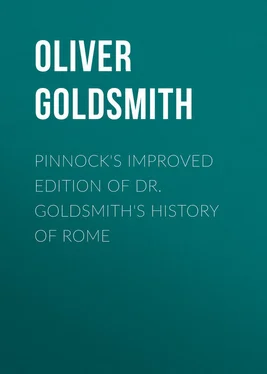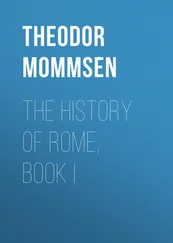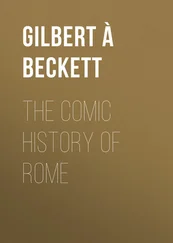Oliver Goldsmith - Pinnock's improved edition of Dr. Goldsmith's History of Rome
Здесь есть возможность читать онлайн «Oliver Goldsmith - Pinnock's improved edition of Dr. Goldsmith's History of Rome» — ознакомительный отрывок электронной книги совершенно бесплатно, а после прочтения отрывка купить полную версию. В некоторых случаях можно слушать аудио, скачать через торрент в формате fb2 и присутствует краткое содержание. Издательство: Иностранный паблик, Жанр: foreign_antique, foreign_prose, на английском языке. Описание произведения, (предисловие) а так же отзывы посетителей доступны на портале библиотеки ЛибКат.
- Название:Pinnock's improved edition of Dr. Goldsmith's History of Rome
- Автор:
- Издательство:Иностранный паблик
- Жанр:
- Год:неизвестен
- ISBN:нет данных
- Рейтинг книги:4 / 5. Голосов: 1
-
Избранное:Добавить в избранное
- Отзывы:
-
Ваша оценка:
- 80
- 1
- 2
- 3
- 4
- 5
Pinnock's improved edition of Dr. Goldsmith's History of Rome: краткое содержание, описание и аннотация
Предлагаем к чтению аннотацию, описание, краткое содержание или предисловие (зависит от того, что написал сам автор книги «Pinnock's improved edition of Dr. Goldsmith's History of Rome»). Если вы не нашли необходимую информацию о книге — напишите в комментариях, мы постараемся отыскать её.
Pinnock's improved edition of Dr. Goldsmith's History of Rome — читать онлайн ознакомительный отрывок
Ниже представлен текст книги, разбитый по страницам. Система сохранения места последней прочитанной страницы, позволяет с удобством читать онлайн бесплатно книгу «Pinnock's improved edition of Dr. Goldsmith's History of Rome», без необходимости каждый раз заново искать на чём Вы остановились. Поставьте закладку, и сможете в любой момент перейти на страницу, на которой закончили чтение.
Интервал:
Закладка:
Oliver Goldsmith
Pinnock's improved edition of Dr. Goldsmith's History of Rome / to which is prefixed an introduction to the study of Roman history, and a great variety of valuable information added throughout the work, on the manners, institutions, and antiquities of the Romans; with numerous biographical and historical notes; and questions for examination at the end of each section. / By Wm. C. Taylor
PREFACE
The researches of Niebuhr and several other distinguished German scholars have thrown a new light on Roman History, and enabled us to discover the true constitution of that republic which once ruled the destinies of the known world, and the influence of whose literature and laws is still powerful in every civilized state, and will probably continue to be felt to the remotest posterity. These discoveries have, however, been hitherto useless to junior students in this country; the works of the German critics being unsuited to the purposes of schools, not only from their price, but also from the extensive learning requisite to follow them through their laborious disquisitions. The editor has, therefore, thought that it would be no unacceptable service, to prefix a few Introductory Chapters, detailing such results from their inquiries as best elucidate the character and condition of the Roman people, and explain the most important portion of the history. The struggles between the patricians and plebeians, respecting the agrarian laws have been so strangely misrepresented, even by some of the best historians, that the nature of the contest may, with truth, be said to have been wholly misunderstood before the publication of Niebuhr's work: a perfect explanation of these important matters cannot be expected in a work of this kind; the Editors trust that the brief account given here of the Roman tenure of land, and the nature of the agrarian laws, will be found sufficient for all practical purposes. After all the researches that have been made, the true origin of the Latin people, and even of the Roman city, is involved in impenetrable obscurity; the legendary traditions collected by the historians are, however, the best guides that we can now follow; but it would be absurd to bestow implicit credit on all the accounts they have given, and the editor has, therefore, pointed out the uncertain nature of the early history, not to encourage scepticism, but to accustom students to consider the nature of historical evidence, and thus early form the useful habit of criticising and weighing testimony.
The authorities followed in the geographical chapters, are principally Heeren and Cramer; the treatise of the latter on ancient Italy is one of the most valuable aids acquired by historical students within the present century. Much important information respecting the peculiar character of the Roman religion has been derived from Mr. Keightley's excellent Treatise on Mythology; the only writer who has, in our language, hitherto, explained the difference between the religious systems of Greece and Rome. The account of the barbarians in the conclusion of the volume, is, for the most part, extracted from "Koch's Revolutions of Europe;" the sources of the notes, scattered through the volume, are too varied for a distinct acknowledgment of each.
HISTORY OF ROME
INTRODUCTION
CHAPTER I.
GEOGRAPHICAL OUTLINE OF ITALY
Italia! oh, Italia! thou who hast
The fatal gift of beauty, which became
A funeral dower of present woes and past,
On thy sweet brow is sorrow plough'd by shame,
And annals traced in characters of flame. — Byron .
1. The outline of Italy presents a geographical unity and completeness which naturally would lead us to believe that it was regarded as a whole, and named as a single country, from the earliest ages. This opinion would, however, be erroneous; while the country was possessed by various independent tribes of varied origin and different customs, the districts inhabited by each were reckoned separate states, and it was not until these several nations had fallen under the power of one predominant people that the physical unity which the peninsula possesses was expressed by a single name. Italy was the name originally given to a small peninsula in Brut'tium, between the Scylacean and Napetine gulfs; the name was gradually made to comprehend new districts, until at length it included the entire country lying south of the Alps, between the Adriatic and Tuscan seas. 2. The names Hespéria, Satúrnia, and Œnot'ria have also been given to this country by the poets; but these designations are not properly applicable; for Hespéria was a general name for all the countries lying to the west of Greece, and the other two names really belonged to particular districts.
3. The northern boundary of Italy, in its full extent, is the chain of the Alps, which forms a kind of crescent, with the convex side towards Gaul. The various branches of these mountains had distinct names; the most remarkable were, the Maritime Alps, extending from the Ligurian sea to Mount Vésulus, Veso ; the Collian, Graian, Penine, Rhœtian, Tridentine, Carnic, and Julian Alps, which nearly complete the crescent; the Euganean, Venetian, and Pannonian Alps, that extend the chain to the east.
4. The political divisions of Italy have been frequently altered, but it may be considered as naturally divided into Northern, Central, and Southern Italy.
The principal divisions of Northern Italy were Ligu'ria and Cisalpine Gaul.
5. Only one half of Liguria was accounted part of Italy; the remainder was included in Gaul. The Ligurians originally possessed the entire line of sea-coast from the Pyrennees to the Tiber, and the mountainous district now called Piedmont ; but before the historic age a great part of their territory was wrested from them by the Iberians, the Celts, and the Tuscans, until their limits were contracted nearly to those of the present district attached to Genoa. Their chief cities were Genúa, Genoa ; Nicœ'a, Nice , founded by a colony from Marseilles; and As'ta, Asti . The Ligurians were one of the last Italian states conquered by the Romans; on account of their inveterate hostility, they are grossly maligned by the historians of the victorious people, and described as ignorant, treacherous, and deceitful; but the Greek writers have given a different and more impartial account; they assure us that the Ligurians were eminent for boldness and dexterity, and at the same time patient and contented.
6. Cisalpine Gaul extended from Liguria to the Adriatic or Upper Sea, and nearly coincides with the modern district of Lombardy. The country is a continuous plain divided by the Pa'dus, Po , into two parts; the northern, Gallia Transpada'na, was inhabited by the tribes of the Tauri'ni, In'subres, and Cenoma'nni; the southern, Gallia Cispada'na, was possessed by the Boi'i, Leno'nes, and Lingo'nes. 7. These plains were originally inhabited by a portion of the Etrurian or Tuscan nation, once the most powerful in Italy; but at an uncertain period a vast horde of Celtic Gauls forced the passage of the Alps and spread themselves over the country, which thence received their name.
8. It was sometimes called Gallia Toga'ta, because the invaders conformed to Italian customs, and wore the toga. Cisalpine Gaul was not accounted part of Italy in the republican age; its southern boundary, the river Rubicon, being esteemed by the Romans the limit of their domestic empire.
9. The river Pa'dus and its tributary streams fertilized these rich plains. The principal rivers falling into the Padus were, from the north, the Du'ria, Durance ; the Tici'nus, Tessino ; the Ad'dua, Adda ; the Ol'lius, Oglio ; and the Min'tius, Minzio : from the south, the Ta'narus, Tanaro , and the Tre'bia. The Ath'esis, Adige ; the Pla'vis, Paive ; fall directly into the Adriatic.
Читать дальшеИнтервал:
Закладка:
Похожие книги на «Pinnock's improved edition of Dr. Goldsmith's History of Rome»
Представляем Вашему вниманию похожие книги на «Pinnock's improved edition of Dr. Goldsmith's History of Rome» списком для выбора. Мы отобрали схожую по названию и смыслу литературу в надежде предоставить читателям больше вариантов отыскать новые, интересные, ещё непрочитанные произведения.
Обсуждение, отзывы о книге «Pinnock's improved edition of Dr. Goldsmith's History of Rome» и просто собственные мнения читателей. Оставьте ваши комментарии, напишите, что Вы думаете о произведении, его смысле или главных героях. Укажите что конкретно понравилось, а что нет, и почему Вы так считаете.











